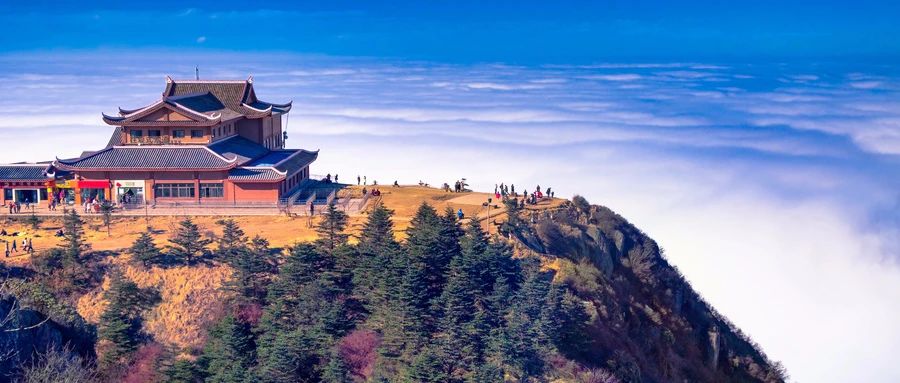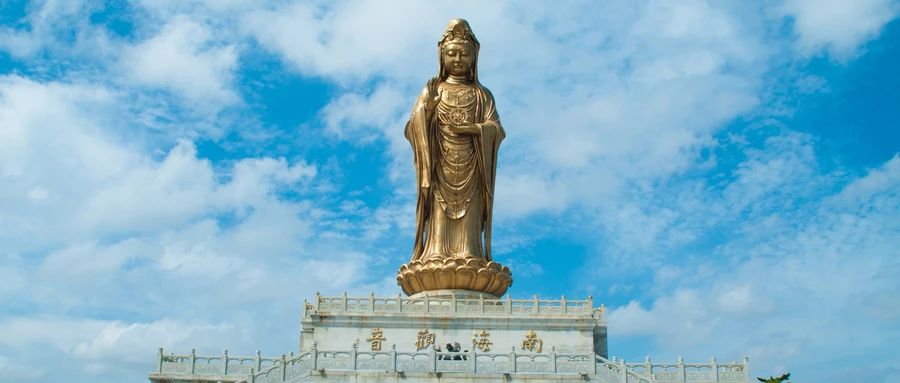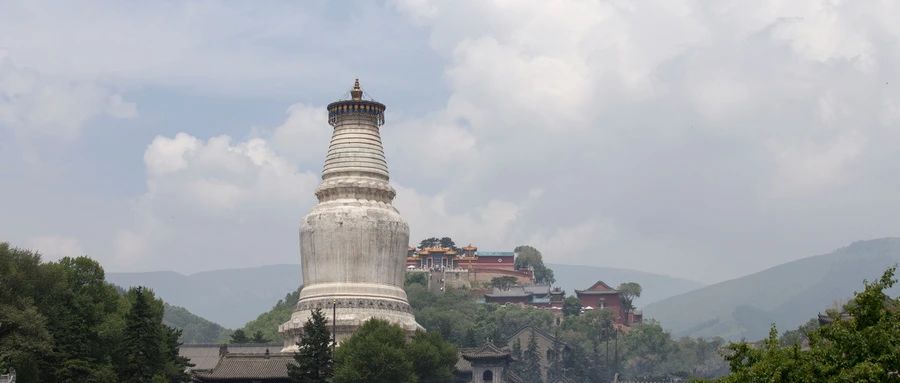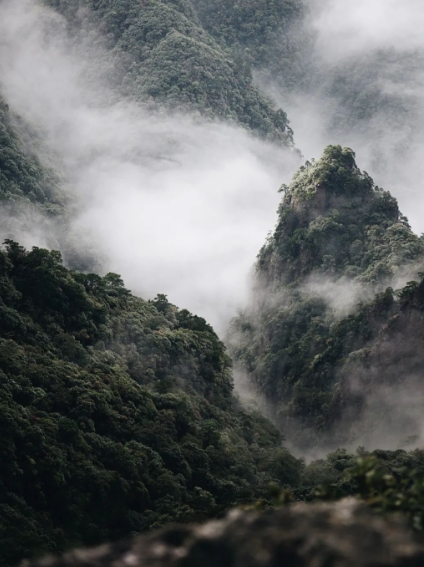The Four Great Buddhist Mountains of China: Understanding the Significance of Mount Jiuhua
As is well-known, Mount Jiuhua in Anhui, Mount Putuo in Zhejiang, Mount Wutai in Shanxi, and Mount Emei in Sichuan are the four great Buddhist mountains in China.
Many people know that Mount Jiuhua is the sacred site of Kṣitigarbha Bodhisattva; Mount Putuo is the sacred site of Avalokiteśvara Bodhisattva; Mount Wutai is the sacred site of Manjushri Bodhisattva; and Mount Emei is the sacred site of Samantabhadra Bodhisattva.
But do you understand the deeper significance of these four mountains and their associated Bodhisattvas?
Mount Jiuhua – Kṣitigarbha Bodhisattva: Great Vows
Mount Jiuhua, known as the “First Mountain of Southeast China,” is located in Chizhou, Anhui Province. Originally called Lingyang Mountain, it got its name from its nine peaks resembling lotus flowers.
Throughout the Tang, Song, and Yuan dynasties, Mount Jiuhua experienced various ups and downs, but Buddhist practices significantly developed during the early Ming period, reaching its peak in the Qing dynasty with over 300 temples and more than 4,000 monks and nuns, making it famous for its religious fervor.
Mount Jiuhua is recognized as the sacred site of Kṣitigarbha Bodhisattva due to the story of the monk Jin Dizang from the Silla Kingdom. In 719 AD, the Silla prince Jin Qiaojue traveled to Tang China, settled on Jiuhua, and dedicated himself to meditation for 75 years until his death at 99. Due to his spiritual accomplishments and various signs, the monks regarded him as the reincarnation of Kṣitigarbha Bodhisattva, and Mount Jiuhua became a pilgrimage site.
Kṣitigarbha Bodhisattva is one of the most important Bodhisattvas in Buddhism. His “Great Vow” signifies his immense aspiration to liberate all sentient beings.
All great Bodhisattvas possess vast vows and take it upon themselves to liberate all beings, pledging: “Sentient beings are countless; I vow to save them; afflictions are inexhaustible; I vow to end them; the Dharma is limitless; I vow to learn it; and the Buddha path is supreme; I vow to attain it.” However, Kṣitigarbha Bodhisattva’s vows are especially profound:
“I will not attain Buddhahood until all beings are saved; I will not enter Nirvana until hell is empty.”
In truth, Kṣitigarbha has already attained enlightenment and Buddhahood. Yet out of deep compassion, he sees all sentient beings as his parents. Since they have not yet escaped suffering, he continually vows to liberate them. Despite having attained Buddhahood, he does not reside in the Buddha’s position, instead manifesting as a Bodhisattva with great power, traversing the six realms to assist beings. His vows are limitless, just as sentient beings are limitless.
Kṣitigarbha’s great vows surpass those of all other Bodhisattvas.
Fan Zhongyan said, “Worry before the world worries, and rejoice after the world rejoices.”
Since ancient times, those who achieve great things must first establish great aspirations. A person’s accomplishments will never exceed their ideals. Therefore, those who aim to achieve significant things must set high aspirations.
Life is not just for oneself; it is for all sentient beings.
As long as we establish a grand aspiration, even if we do not visit Mount Jiuhua, it is equivalent to meeting Kṣitigarbha Bodhisattva.
Mount Emei – Samantabhadra Bodhisattva: Great Action
Mount Emei, located in Leshan, Sichuan Province, is the sacred site of Samantabhadra Bodhisattva. Known for its steep terrain and beautiful scenery, it has the reputation of being “the most beautiful mountain in the world.”
According to legend, during the ninth century, Taoist temples already existed on the mountain. After Buddhism was introduced during the Song dynasty, temples were built, and Mount Emei was revered as the sacred site of Samantabhadra Bodhisattva, transforming the mountain from Taoism to Buddhism. The development of Buddhism over nearly two thousand years has left a rich cultural heritage on Mount Emei, making it a significant Buddhist holy site both in China and worldwide.
Samantabhadra Bodhisattva embodies the path of wisdom, striving for the supreme Buddha fruit above while compassionately guiding countless beings below, which represents “great action.”
It is said that the Bodhisattva’s form and virtues pervade all places, thus he is called Samantabhadra.
Master Hongyi praised: “May I practice the true vows and actions of Samantabhadra, and always benefit all sentient beings.”
The significance of Samantabhadra Bodhisattva lies in the emphasis on action in life.
We must pursue the difficult path. Life’s hardships are a precious treasure; while favorable circumstances bring joy, they can also obscure many issues. It is in adversity that we discover problems and strive for self-improvement.
The setbacks we experience shape the heights we can achieve. Difficulties often present the best opportunities for growth. By overcoming challenges, we gain experience and maturity.
We must pursue the broad path. We should hold ourselves to high standards in life while allowing some flexibility in our actions. To desire without knowing when to stop can lead to loss. As Zhuge Liang said: “Cultivate oneself with tranquility, nourish virtue through frugality. Without detachment, one cannot clarify aspirations; without tranquility, one cannot achieve far-reaching goals.”
Regardless of how harsh the environment may be, we can clarify our goals and work tirelessly toward them without interruption.
Mount Putuo – Avalokiteśvara Bodhisattva: Great Compassion
Mount Putuo, located on the eastern side of Zhoushan Island in Zhejiang Province, is renowned as the sacred site of Avalokiteśvara Bodhisattva and a Buddhist holy land.
With a rich history, Mount Putuo is often referred to as the “First Buddhist Kingdom in China.” It was initially established as a sacred site for Avalokiteśvara during the Tang dynasty. In the years of the Xiantong era, a Japanese monk named Huie discovered an Avalokiteśvara statue on Wutai Mountain. While passing by Mount Putuo, he found the waters filled with iron lotuses, preventing his ship from passing.
Assuming Avalokiteśvara would not allow him to cross to Japan, he left behind the “unwilling to go” statue. This statue remains on the mountain, and Huie is regarded as the first patriarch of Mount Putuo.
For over two thousand years, Avalokiteśvara Bodhisattva has been revered as “the faith of half of Asia,” leading to the saying, “Every family worships Amitābha; every household reveres Avalokiteśvara.”
The “Lotus Sutra” states: “If there are countless beings suffering from all kinds of afflictions, and they sincerely call upon Avalokiteśvara Bodhisattva’s name, he will immediately hear their cries and grant them liberation.”
Avalokiteśvara symbolizes the great compassion of Buddhism, thus known as “Great Compassionate Avalokiteśvara.” To save sentient beings also requires wisdom, which is why Avalokiteśvara’s other name, “Observer of the Sounds of the World,” reflects her wisdom.
Compassion and wisdom are inherently inseparable. With wisdom comes compassion; with compassion comes the manifestation of wisdom.
Buddhism speaks of “emptiness,” but clinging to emptiness leads to an erroneous understanding, distancing us from enlightenment.
The remedy for this misunderstanding is compassion, relieving others from suffering and bringing them joy. In this process of giving, we can understand true happiness.
Making others happy represents compassion, while making oneself happy embodies wisdom.
Understanding the wisdom that brings oneself joy allows one to grasp the essence of compassion.
Avalokiteśvara’s compassion is “unconditioned great compassion, with shared suffering for all.” Her good deeds are performed without seeking any reward; just by calling her name in times of trouble, one can be liberated from suffering.
If we can emulate Avalokiteśvara in our daily lives by helping others and nurturing the thoughts of forgiveness and kindness, we can all become Bodhisattvas.
Mount Wutai – Manjushri Bodhisattva: Great Wisdom
Mount Wutai, located in Wutai County, Shanxi Province, is the sacred site of Manjushri Bodhisattva and one of the earliest sites for Buddhist temple construction in China.
Renowned for its long history of temple construction and grand scale, it is regarded as the foremost of the four great Buddhist mountains—thus called “Golden Wutai.”
Mount Wutai consists of five high peaks, representing the five wisdoms of Manjushri Bodhisattva: the wisdom of the mirror, the wisdom of discerning all phenomena, the wisdom of equality, the wisdom of accomplishing all tasks, and the wisdom of the essence of all Dharmas. It also corresponds to the five directional Buddhas: the eastern Achala Buddha, the western Amitābha Buddha, the southern Ratnasambhava Buddha, the northern Amoghasiddhi Buddha, and the central Vairocana Buddha.
Manjushri Bodhisattva, known as the “Great Wisdom Manjushri,” is regarded as the teacher of the Seven Buddhas. He is recognized for his intelligence and eloquence, being the foremost among Bodhisattvas, thus termed ”
The common depiction of Manjushri Bodhisattva shows him wearing a crown of five topknots, symbolizing the internal realization of the five wisdoms. He holds a sword, representing the cutting of all afflictions through prajna wisdom, and rides a lion, symbolizing his powerful voice that awakens bewildered beings.
It is said that those who sincerely worship Manjushri on Wutai Mountain can unlock their wisdom, let go of attachments, break free from the constraints of fame and fortune, and attain a state of great wisdom in life.
If we consider ourselves knowledgeable but fail to deeply reflect on the truths of the universe and the meaning of life, how can we expect to encounter Manjushri even if we visit Wutai Mountain daily?
It’s important to understand that a bodhisattva is not a god but a person of high spiritual attainment. Each of us, as long as we have grand aspirations, an open heart, and profound wisdom, and earnestly put these into action, is already on the path to becoming a bodhisattva.